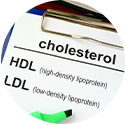A new paper entitled, Environmental pollutants and child health—A review of recent concerns, provides information and evidence for the effects of a wide range of environmental contaminants (air pollutants, heavy metals, organochlorine compounds, perfluoroalkyl substances (PFAs), polybrominated diphenyl ethers, pesticides, phthalates and bisphenol A) on child health outcomes.

The review addresses effects on fetal growth and prematurity, neurodevelopment, respiratory and immune health, and childhood growth and obesity.
The research team from Spain found good evidence that often even at lower chemical exposure levels, adverse effects were seen in fetal growth for air pollution and polychlorinated biphenyls (PCBs), for neurotoxic effects of lead, methylmercury, PCBs and organophosphate pesticides, and for respiratory health effects of air pollution.
Moderate evidence has emerged for a potential role of environmental pollutants in attention deficit hyperactivity disorder and autism (lead, PCBs, air pollution), respiratory and immune health (dichlorodiphenyldichloroethylene – DDE – and PCBs), and obesity (DDE).
In addition, there is now moderate evidence that certain chemicals of relatively recent concern may be associated with adverse child health outcomes, specifically perfluorooctanoate (carpeting, personal care products) and fetal growth, and polybrominated diphenyl ethers (flame retardant materials) and neurodevelopment.
Since most of the recent literature evaluates common exposures in the general population, and not particularly high exposure situations, this accumulating body of evidence suggests that the unborn and young child require more protection than is currently provided. Large, coordinated research efforts are needed to improve understanding of long-term effects of complex chemical mixtures.1
Associations between environmental pollutants and child health
Recently, researchers at the Columbia Center for Children’s Environmental Health at the Mailman School of Public Health demonstrated an association between childhood asthma and prenatal exposure to two phthalates used in a diverse array of household products.
- Children born to mothers exposed during pregnancy to higher levels of the chemicals, butylbenzyl phthalate (BBzP) and di-n-butyl phthalate (DnBP) had a 72 percent and 78 percent increase in risk of developing asthma between age 5 and 11, respectively, compared with children of mothers with lower levels of exposure, the researchers found.2
In other research, doctors from the NYU Langone Medical Center found that plastic additives (phthalates) commonly found in flooring, plastic kitchen and foodware may be responsible for metabolic and hormonal abnormalities, especially during early childhood and may lead to heart problems.
Further, children who had PVC floorings in the bedroom were more likely to develop asthma when compared with children living without such flooring material. Furthermore, there were indications that PVC flooring in the parents’ bedrooms were stronger associated with the new cases of asthma when compared with child’s bedroom. This could be an indication that prenatal exposure is of importance.3
Another study says children who are exposed to polychlorinated biphenyls (PCBs), which were commonly used in a range of industrial products, could be at risk of an increase in asthma symptoms. 4PCBs were regularly used between 1930s and 1970s in a range of electrical equipment, lubricants and paint additives. They were eventually phased out due to the harm they were causing to the environment and animals.
Although they are not widely used now, the toxic substance does not break down easily. It can be transported in water and air and it can exist in the environment, particularly at waste sites, for a number of years.
In studies about chemical compounds found in home and respiratory health of children that they were carried out in cold areas, less ventilation of the home and uses of wall-to-wall carpeting and insulation were frequent. In those studies significant correlations between the presence of these materials in the home and respiratory problems in children were found.5
At the Magaziner Center for Wellness, we begin our treatment of suspected health concerns in children by determining sensitivities to food and other common allergens. We also explore Detoxification – clearing toxins, including heavy metals, from the body or neutralizing or transforming them.
Proper detoxification helps with all endocrine function including regulation of mood, growth and development, and tissue function. The endocrine system influences almost every cell and organ of the body, so the elimination of toxins is integral to health and wellbeing.
At the Magaziner Center for Wellness, we utilize a number of in-office and at-home detoxification procedures to help our patients eliminate or prevent the buildup of harmful toxins that enter the bloodstream through poor diet or daily exposure to dangerous, but common, environmental pollutants.
Do you have questions? Contact our office
1 Vrijheid M, Casas M, Gascon M, Valvi D, Nieuwenhuijsen M. Environmental pollutants and child health-A review of recent concerns. Int J Hyg Environ Health. 2016 Jul;219(4-5):331-42. doi: 10.1016/j.ijheh.2016.05.001. Epub 2016 May 11.
2 Phthalates heighten risk for childhood asthma Columbia University’s Mailman School of Public Health
3. http://www.erscongress2012.org/mediacenter/news-release.html
4. http://www.epa.gov/osw/hazard/tsd/pcbs/pubs/about.htm
5. Virginia Fuentes-Leonarte, Ferran Ballester, and José Maria Tenías, “Sources of Indoor Air Pollution and Respiratory Health in Preschool Children,” Journal of Environmental and Public Health, vol. 2009, Article ID 727516, 19 pages, 2009. doi:10.1155/2009/727516




































Recent Comments